Read the full Fall 2020 issue here
Ask the average American about the saints of New York, and you’re likely to elicit a puzzled look.
In popular culture, the region is more commonly associated with sinners on a grand scale: organized crime bosses, corrupt political machines, rapacious robber barons.
Ask a New York Catholic, on the other hand, and you can expect a smile of instant recognition, followed by a list of local favorites: Mother Seton. Mother Cabrini. Kateri Tekakwitha.
In the following pages, we profile some of the saints (and candidates for sainthood) associated with our region. Of course, that doesn’t mean they “belong” to us in any way; all of these holy figures can also be claimed by localities outside the Archdiocese of New York. Which is hardly a surprise: It’s not in the nature of sanctity to be delimited by geographic boundaries.
A saint’s light shines for all. Still, blessings reside in the places where they lived or worked or died. Many of us feel a deep connection to God when we visit the physical location where a saint walked or prayed. A strong local association with a saint is wonderful, and any association is cause for joy.
For New Yorkers, there’s a lot of joy to be had in our own backyard.
Missionary Martyr

In 1646, a century and a half before the founding of the Diocese of New York, Fr. Isaac Jogues was martyred near what is now the town of Auriesville, in the foothills of the Adirondack Mountains. Jogues, a Jesuit missionary, was born in Orleans, France, and first came to North America in 1636 to join a handful of other Jesuits ministering to the Huron at what is now Georgian Bay in Ontario.
At their wilderness outpost of Ste. Marie, the Jesuits carved a settlement out of the forest, clearing farmland and building a fort for protection and a church where they could invite the Huron to join them on Sundays and feast days. In general, they presented a model of Christian living to the local population while witnessing to the Gospel and the teachings of Christ. Jogues worked tirelessly at Ste. Marie and was also dispatched on missions to the Potun and Ojibway tribes, venturing as far as the shores of Lake Superior.
In 1642, Jogues led a canoe expedition to Quebec, nearly 1,000 miles away, to bring back supplies and some new recruits for the mission. On the return journey, he and his 40 companions were attacked by a Mohawk war party, who killed many of the Huron and took the rest prisoner along with Jogues and two lay Jesuits, transporting them south to a settlement known as Ossernenon. The two other Europeans were soon killed, For the next year, Jogues survived harrowing torture and near starvation at the hands of his captors, while continuing to evangelize and even baptize anyone he saw who was near death. He lost two fingers and all his fingernails in the torture, but he did not yield in his faith and his determination. In 1643, with the aid of Dutch protestants in a settlement where the Mohawk brought him, Jogues was able to escape on a ship to New Amsterdam – now New York City – where he was the first Catholic priest to visit, and may have said the first Catholic Mass.
Back in France, Jogues found himself famous, invited to meet with royalty and admired by many for his courage and perseverance. For all that, he wanted only to return to North America and continue his missionary work. By 1644, he was back in Canada, in Quebec and Montreal, helping to negotiate peace between the French and Iroquois. His missionary work took him back to Ossernenon, where he had been held captive and tortured for so long. His courage, forgiveness and piety won over a number in the tribe. The Mohawk gave him the name Ondessonk, meaning “the indomitable one.”
When he returned the following year, however, he was again taken captive. Many Mohawk blamed the missionaries for an epidemic that had occurred the previous winter. A violent faction attacked and killed him and his fellow Jesuit Jean de LaLande, threw their bodies in a ravine and mounted their heads on pikes to warn other “Black Robes” to stay away.
Jogues was canonized by Pope Pius XI in 1930, along with LaLande and six other Jesuits who were martyred in the wilderness of New York State and Canada in the 1600s. The Shrine of the North American Martyrs in Auriesville is dedicated to the memory of these Jesuits and the Native Americans they converted.
Born in the U.S.A
In 1774, nearly 100 years after St. Isaac Jogues visited Manhattan – then the Dutch colony of New Amsterdam – a girl named Elizabeth Ann Bayley was born on the island. By the time of her birth, the city was called New York and the American Revolution was two years away.
Elizabeth Ann Bayley did not take the direct route to Catholic sainthood. Born an Episcopalian, she was married in 1794 to William Magee Seton, lived at a fashionable Wall Street address and had five children by the time she was 28 years of age. She was a prominent member of the Trinity Episcopal Church and the treasurer of the Society for the Relief of Poor Widows with Small Children.
In the early 1800s, however, the family’s fortunes waned amid political upheavals and economic setbacks. When William’s tuberculosis took a turn for the worse, his doctor suggested that Elizabeth should travel with him to Italy, where he died. It was during her mourning for William that friends of the family residing in Italy introduced Elizabeth to Catholicism. Impressed by their kindness and good works, Elizabeth became a convert when she returned to New York the following year. In 1805, she was baptized at St. Peter’s Church, then the only Catholic church in New York City.
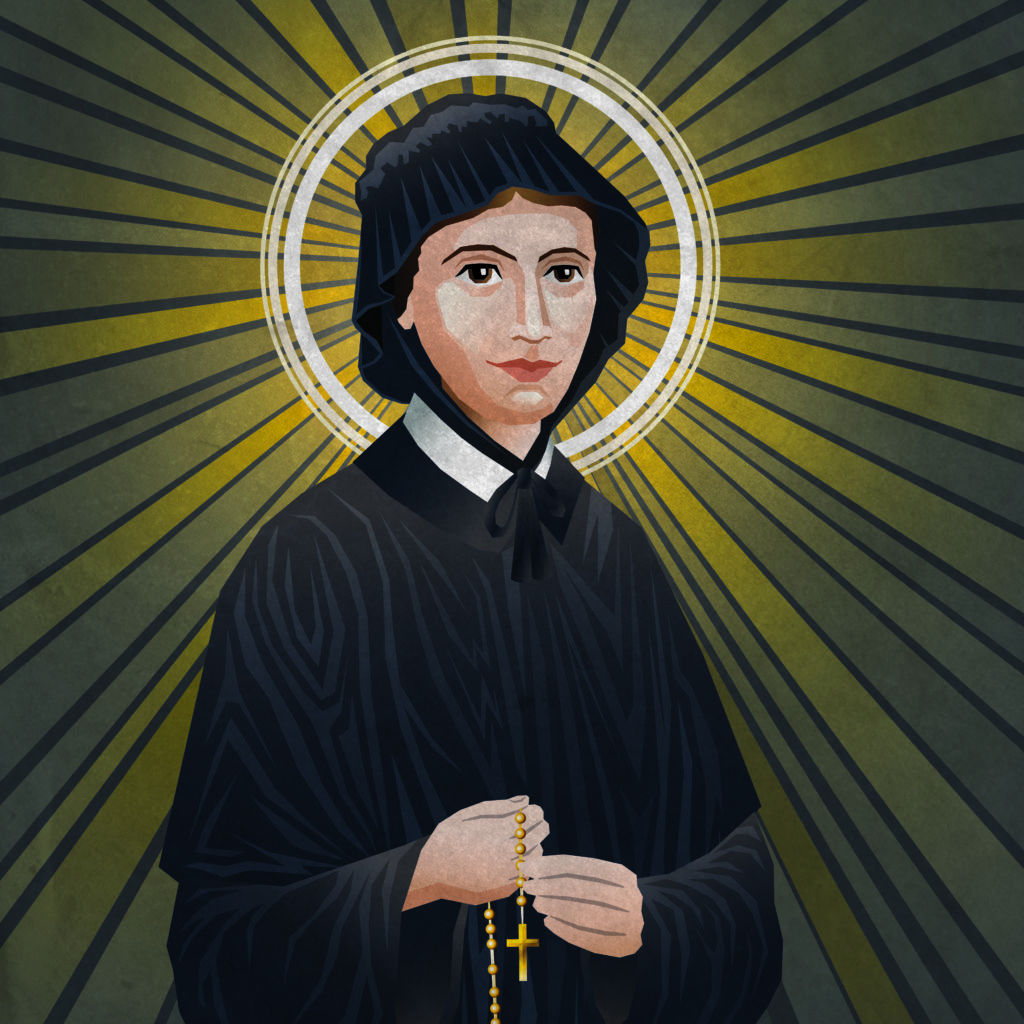
In the 16 years between her baptism and her death, Seton built a religious career that places her among the most important and influential American Catholics in history. She began by teaching in New York before being invited to start a school for Catholic girls in Emmitsburg, Maryland. There she founded the Sisters of Charity, the first congregation of women religious founded in America, and went on to found a network of Catholic schools in locations around the country – all while raising her five children. The Sisters of Charity were asked to send some sisters to New York City as teachers, which marked the inception of a robust New York congregation of the order. The many institutions created by the Sisters – in the Archdiocese of New York and around the country – include schools, hospitals, children’s centers and community-supported farms.
Elizabeth Ann Bayley Seton died in 1821 at the age of 46 and was canonized in 1975 by Pope Paul VI. The Sisters of Charity remain a profound force in American Catholicism. Deeply loved by New York Catholics, Seton is memorialized at the National Shrine of St. Elizabeth Ann Seton in Emmitsburg and at the St. Elizabeth Ann Seton Shrine on the site of a home where she lived in lower Manhattan.
Authentic Brotherly Love
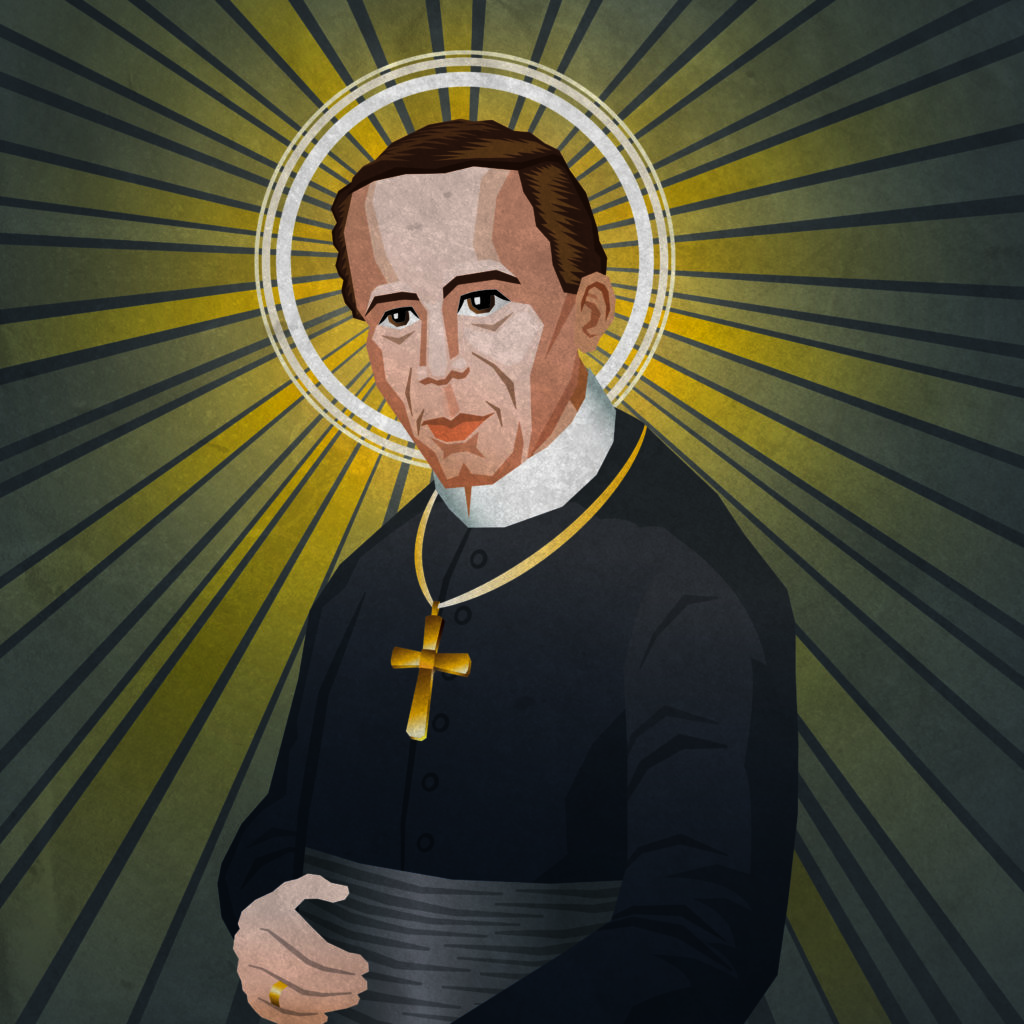
St. John Nepomucene Neumann was born in Bohemia (now the Czech Republic) in 1811. At the age of 24, in 1835, having attended seminary and as he prepared to complete his studies in theology, Neumann learned that the Catholic Church in Bohemia had declared a moratorium on new ordinations because they had more priests than assignments for them. Determined to become a priest, he set sail for New York, where he arrived with no money and a single suit of clothes.
In June 1836, Bishop John Dubois ordained Neumann at St. Patrick’s Cathedral (now the Basilica of Old St. Patrick’s Cathedral, in SoHo) and. He assigned the young priest, who spoke eight languages, to minister to German immigrants at the Church of Sts. Peter and Paul in Williamsville, near Buffalo, which at the time was part of the Diocese of New York.
For four years, Neumann rode his large rural parish on horseback, building community, visiting the sick, educating children and training teachers to carry on as catechists in his absence. Then, in 1840, he applied to join the Redemptorist Fathers, was accepted, and moved to Baltimore to study. The first Redemptorist candidate in the Americas, he took his vows with the order in 1842, then served parish assignments in Ohio and Maryland, tirelessly developing religious education and strengthening communities. In 1849 he became the provincial superior for the Redemptorists in the United States, and three years later, he was named bishop of Philadelphia.
With his many languages and understanding of diverse cultures, Neumann was an ideal choice to lead the Church in the so-called City of Brotherly Love, a growing urban region that was attracting Catholic immigrants from all over Europe. It was no easy task, as anti-Catholic and anti-immigrant factions, urged on by organizations like the Know Nothing Party, were rioting regularly against the Germans, Italians and Irish who were streaming into the Philadelphia area. Against this backdrop, Neumann worked to help immigrants find a footing in the city and to establish sound finances for many church communities. More than 90 new churches were built in the diocese under his watch, and nearly 200 parochial schools. He invited European religious orders to establish ministries in Philadelphia, including the School Sisters of Notre Dame, who provided religious instruction in the many new schools, and supported the Oblate Sisters of Providence, an order of African-American women religious. A humble man, he also eschewed material comforts; legend has it that he owned only one pair of shoes during his decades in America.
At the age of 48, in 1860, Bishop Neumann collapsed and died while out walking in Philadelphia. He was canonized by Pope Paul VI in 1977. “His love for people was authentic brotherly love,” the pope said in his homily for the occasion. “He was close to the sick; he was at home with the poor; he was a friend to sinners. And today he is the honor of all immigrants.”
Patron of Immigrants
Mother Frances Xavier Cabrini arrived in New York in 1889, accompanied by six other sisters of the Missionary Sisters of the Sacred Heart of Jesus. Nineteen years earlier, at the age of 20, she had been deemed too frail and sickly to join the Daughters of the Sacred Heart of Jesus in the rural Italian region where she was born. Now, having founded the Missionary Sisters in Italy, she arrived in one of the world’s most tumultuous cities with a mission to serve the thousands of immigrants arriving from Italy and elsewhere in Europe – to help them survive in the New World and stay strong in their faith, and to protect and educate their children.
Cabrini had not planned to come to New York. In 1887, she had petitioned Pope Leo XIII to establish missions in China. The pope, however, concerned about the plight of the immigrants in America, sent her to New York instead, telling her, “Go west, not east.” Without hesitation, she devoted herself to the needy masses of the New World with great resourcefulness. Starting with few resources, she proved adept at securing donations of funds and labor to enable her congregation to begin delivering services. Housed at first with the Sisters of Charity and using a donated apartment as a refuge for orphaned girls, Cabrini soon secured a property in West Park, in Ulster County, formerly owned by the Jesuits, where she opened the Sacred Heart Orphan Asylum in 1890.
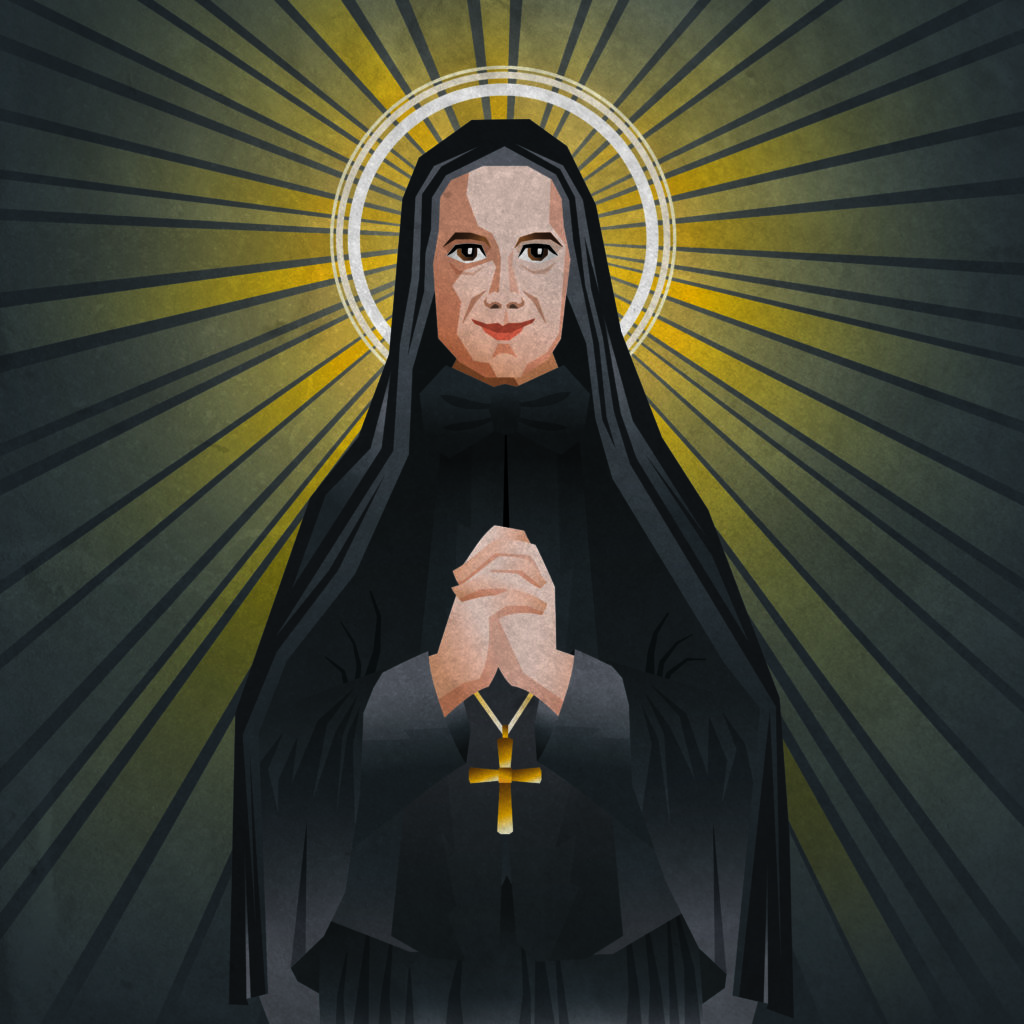
All around the New York metropolitan region, she established schools and orphanages for immigrant children and offered language and religious education to adults. In all, Cabrini and the Missionary Sisters of the Sacred heart went on to found 61 institutions around the United States as well as in Europe and Latin America, including schools, orphanages, hospitals and training convents for new sisters.
Cabrini died in 1917 at Columbus Hospital in Chicago, which had been founded by the Missionary Sisters. She was canonized by Pope Pius XI in 1946. There are a number of shrines to Mother Cabrini in the United States, including the St. Frances X. Cabrini Shrine in northern Manhattan, symbolically located with breathtaking views over the Hudson River to the west and, to the east, a sprawling neighborhood of busy streets and apartment buildings filled with working-class immigrants and their families.
Bumping into Heaven
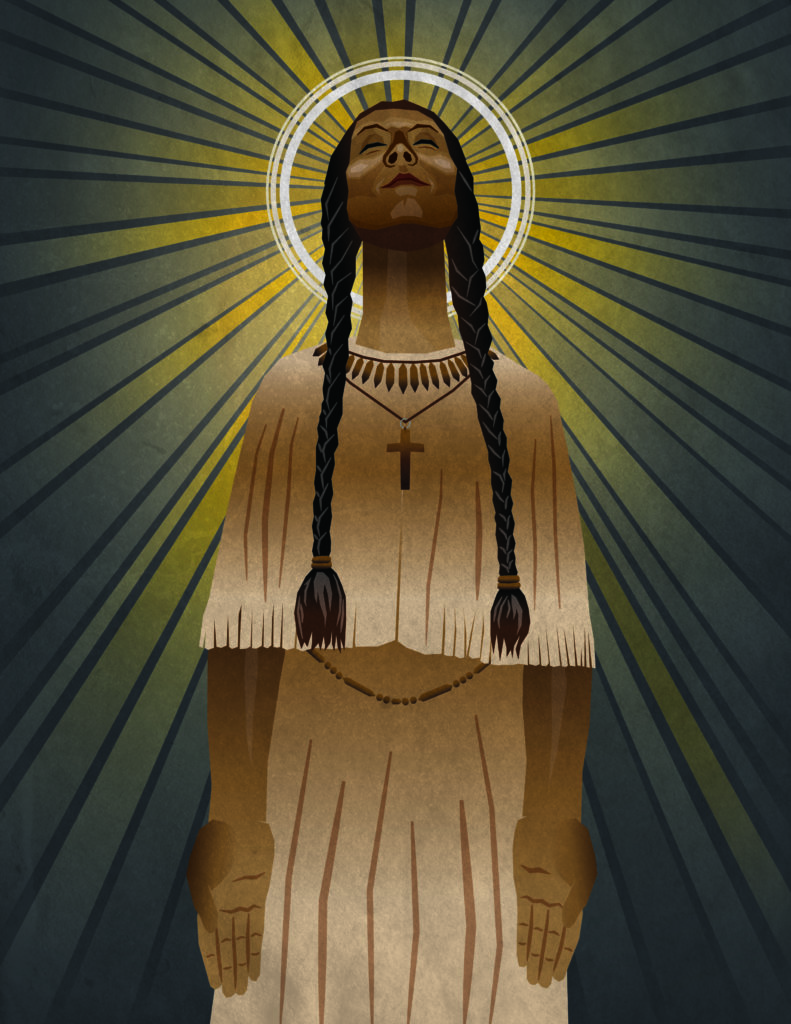
In 1656, a decade after the death of St. Isaac Jogues, Kateri Tekakwitha was born in Ossernenon, the village near present-day Auriesville, where Jogues was martyred. Her father was a Mohawk chief, her mother an Algonquin Catholic who had been captured and assimilated into the Mohawk people. Her Mohawk name, Tekakwitha, means “she who bumps into things”; the name Kateri, a form of Catherine, was given to her when she converted to Christianity.
When Tekakwitha was 4, a smallpox epidemic swept through Ossernenon. Tekakwitha survived, but the disease killed both her parents and left the girl in poor health, her face scarred and her eyesight significantly impaired. Raised in the family of her aunt, Tekakwitha learned about Christianity from Jesuit missionaries who visited the settlement, and was quickly drawn to the faith.
Through years of upheaval in the region, amid tribal wars and invasions abetted by French and Dutch fur traders, Kateri remained quiet and humble, helping with harvesting and caring for the sick. Despite pressure from her aunts, she insisted that she would not marry. Surrounded by violence and facing her stepfather’s disapproval, she moved steadily toward a devotion to the Christian faith, and at the age of 18 began catechesis with Fr. Jacques de Lamberville, a Jesuit missionary who visited the settlement of Caughnawauga. She was baptized during Holy Week of 1676, taking her baptismal name from St. Catherine of Siena.
Six months later, accused of sorcery by some who opposed her conversion, Tekakwitha journeyed to Kahnawake, a Jesuit mission on the St. Laurence River near Montreal established for the conversion and religious instruction of native people. There Tekakwitha lived in a longhouse with other converted Mohawk, including some she had known in her settlement. Her life of extraordinary devotion to prayer, penance and purity inspired all around her during the few remaining years of her life; she and a friend wished to form a congregation of native women religious, but Tekakwitha did not live long enough to see this through.
Kateri Tekakwitha died at the age of 24 in 1680. Her last words, according to Fr. Claude Chauchetière, were “Jesus, Mary, I love you.” She was canonized by Pope Benedict XVI in 2012, and is beloved throughout the New York region as patron saint of peace and ecology. The St. Kateri Tekakwitha National Shrine and Historic Site at Caughnawauga, near Fonda, New York, was dedicated to her in 1980.
State of Holiness
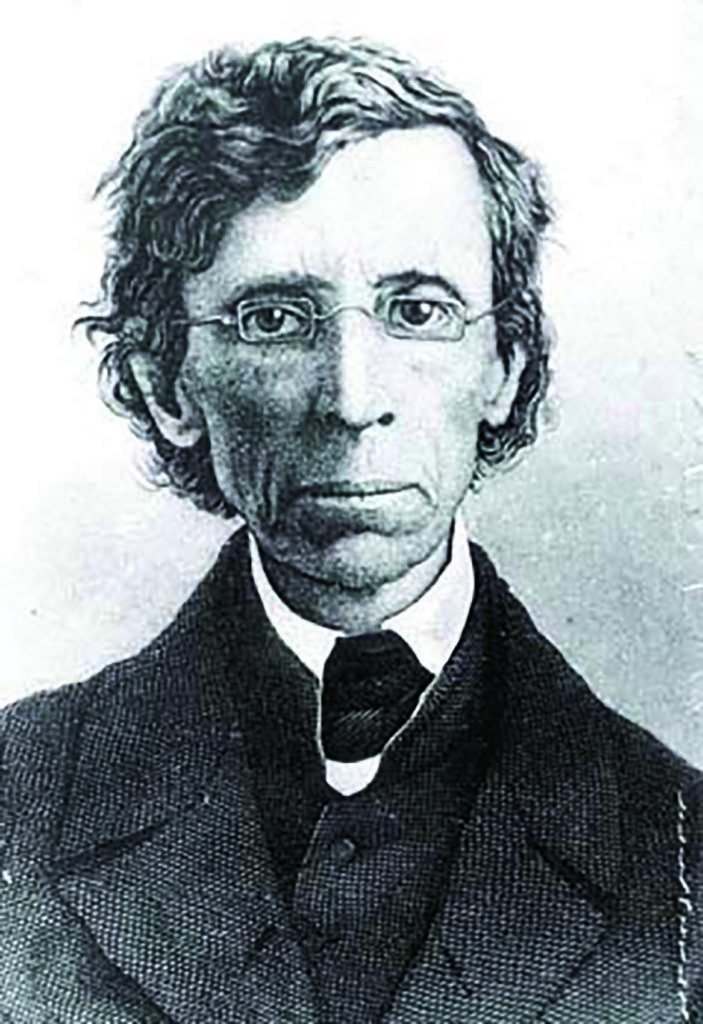
Looking for more local holiness? Wait 20 years and New York may be awash in sanctity.
The process of declaring a saint in the Catholic Church usually takes decades, sometimes centuries. Along the way, a candidate must first be certified as a servant of God, then venerable, then blessed before canonization can be considered.
These titles aren’t just milestones on the way to sainthood; each is a mark of glory in itself. We can pray to them, honor them – and as New Yorkers, we can be humbly thankful that our region has been blessed by the presence of even more great Catholics, listed below.
Servants of God
Dorothy Day 1897–1980
Co-founder of the Catholic Worker movement who tirelessly fought for the poor, the hungry and the homeless. Her cause was launched by John Cardinal O’Connor in 1990.
Terence Cardinal Cooke 1921–1983
Archbishop of New York from 1968 until his death in 1983, known for his work to protect the unborn and provide educational opportunities to the underprivileged. The Cardinal Cooke Guild was formed to promote his cause for sainthood in 1984.
Fr. Isaac Hecker 1819–1888
A native New Yorker and founder of the Paulist Fathers. In 2010, Cardinal Edward Egan launched his cause for sainthood.
Rose Hawthorne Lathrop (Mother Mary Alphonsa, OP) 1851–1926
A Catholic convert and founder of the Dominican Sisters of Hawthorne, known for her devotion to the care of people with terminal cancer. The movement for her canonization was begun in 2003.
Fr. Vincent Capodanno 1929–1967
A Staten Island native and Maryknoll missionary who became a Marine chaplain in Vietnam and was killed while assisting soldiers in the heat of battle. His cause for sainthood was initiated in 2010.
Venerables and Blesseds
Venerable Pierre Toussaint 1766–1853
A prominent Black New Yorker and businessman of the 19th century whose charitable work and contributions supported orphans, immigrants and schools – and helped fund the construction of the original St. Patrick’s Cathedral in SoHo. Declared venerable in 1996.
Venerable Mother Mary Angeline Teresa McCrory 1893–1984
An Irish-born religious sister who founded the Carmelite Sisters of the Aged and Infirm in New York in 1929. Declared venerable in 2012.
Venerable Rev. Fulton J. Sheen 1895–1979
An auxiliary bishop in the Archdiocese of New York in the 1950s and ‘60s, later bishop of Rochester, who is widely known for his pioneering work in the use of radio and television for evangelization. Declared venerable in 2012.
Venerable Felix Varela y Morales 1788–1853
A Cuban priest and advocate for Latin American independence who went on to become vicar general of the Archdiocese of New York and a powerful supporter of immigrants. Declared venerable in 2012.
Blessed Solanus Casey 1870–1957
A Capuchin friar known for his speaking and counseling skills; served in Yonkers and New York City for two decades. Beatified in 2017.
And a Few More Saints
Though their connection to the Archdiocese of New York is less direct, these saints too had ties to our region.
St. Marianne Cope 1838–1918
A Franciscan sister from way upstate (Syracuse) who became legendary as Mother Marianne of Molokai, overseeing the care of people suffering from leprosy in Hawaii for three decades. Canonized in 2012.
St. Jean de LaLande 1616–1646 and St. René Goupil 1608–1642
Jesuit lay missionaries who worked alongside St. Isaac Jogues. Both canonized in 1930.
St. Pope Paul VI 1897–1978 and St. Pope John Paul II 1920–2005
Both popes visited the Archdiocese of New York – John Paul II visited three times! Canonized in 2018 and 2014, respectively.
